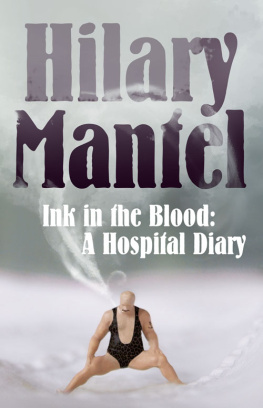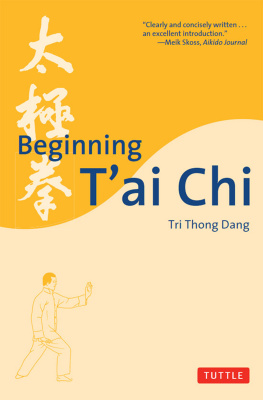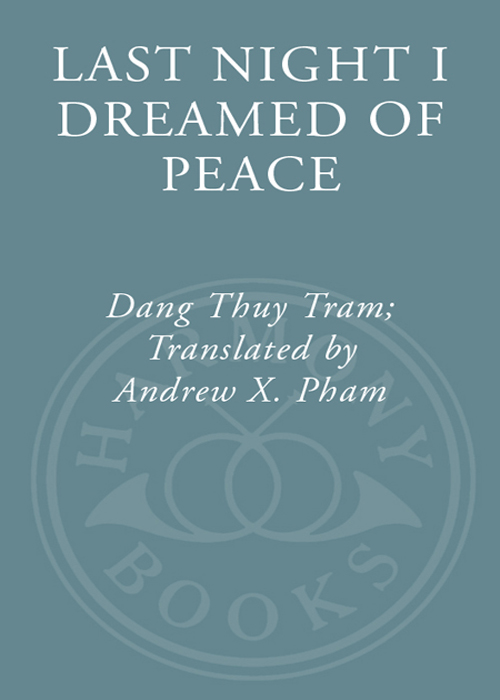
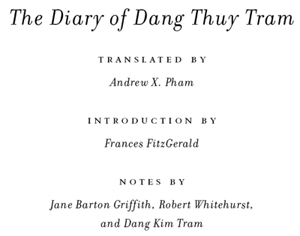
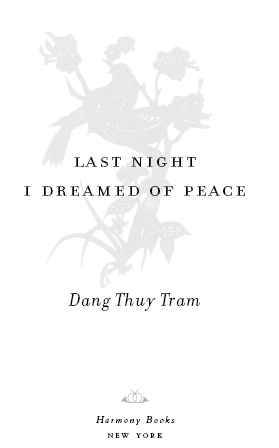
CONTENTS
INTRODUCTION
Operated on one case of appendicitis with inadequate anesthesia. I had only a few meager vials of Novocain to give the soldier, but he never groaned once during the entire procedure. He even smiled to encourage me.
The diary of Dang Thuy Tram begins on April 8, 1968, just two months after the Tet offensive. She is twenty-five years old, the chief physician at a field hospital in the mountains of central Vietnam. Its a civilian clinic, but she treats mainly sick and wounded soldiers. Sometimes large North Vietnamese army, or main force guerrilla, units pass by, leaving as many as eighty patients in her thatched-roof hospital. Sometimes she walks many miles through the rugged mountains or down to the lowlands to care for the wounded on the field of battle. She also trains young people to be health practitioners in Duc Pho, the district she has been assigned to in Quang Ngai Province.
When Thuy arrived from Hanoi the year before, fresh out of medical school, her superiors had hesitated before sending her to the isolated clinic. Small and slight with a pale complexion, she was a city girl who had grown up in relatively privileged circumstances. Her father was a surgeon at St. Pauls Hospital, her mother a lecturer at the Hanoi School of Pharmacology and one of the leading experts on the use of Vietnamese medicinal plants. Her parents werent richno one was in North Vietnam at the timebut they were cultured people who filled their small house on Giang Vo Street in Hanoi with books and flowers. Her father played Western classical music to relax after surgery and taught Thuy to play the violin and the guitar.
The eldest of five childrenfour girls and much younger boyThuy Tram attended the elite Chu Van An high school. Founded by the French in 1906 as the Lyce du Protectorate, the school with its campus on the West Lake had trained generations of prominent Vietnamese intellectuals, artists, and politicians. For four years Thuy, dressed in a white ao dai, studied in the handsome French colonial buildings with their spacious classrooms, the breeze coming through the transoms over the high louvered doorways. Her concentration was science, but she loved literatureVietnamese poetry and the French and Russian novels sent from the Soviet Union. According to classmates, she was beautiful, intelligent, and warm-hearted, and all the boys were a little in love with her. She went on to Hanoi University Medical School and, following in her fathers footsteps, trained as a surgeon. On graduating, she was accepted for advance study in optical surgery, but she chose instead to serve in the war zone of the South.
On December 23, 1966, she boarded a truck in Hanoi with a group of civiliansjournalists, photographers, and doctorsand drove 250 miles south to a staging area in Quang Binh Province. From there, she and her companions set off on foot with heavy packs on their backs and walked for three months down what the Americans called the Ho Chi Minh Trail through the mountains of the Troung Son range. Their destination was Quang Ngai, the fifth province below the demilitarized zone that divided the North from the South, and they reached it in late March or early April.
Like the other provinces of central Vietnam, Quang Ngai has a dramatic topography: high mountains with rivers that plunge down through foothills to a coastal plain and into the China Sea. In Quang Ngai, the plain is eighty kilometers long and ten to twenty-five kilometers wide, well irrigated by tributary streams and extremely fertile. The Vietnamese are rice growers, and when the first settlers came down from the North after the conquest of the Kingdom of Champa in the fifteenth century, they turned their backs to the mountains and built their villages on the plain. In central Vietnam, the villages are composed of widely dispersed hamlets, and in the early 1960s, before the arrival of the American troops, the hamlets of Quang Ngai nestled within bamboo hedges and groves of trees, looking over their paddy fields, emerald green in the spring. In some, the dwellings were made of clay and thatch, but others had fine houses with huge polished beams holding up the red-tiled roofs, brick courtyards where the rice was threshed, and outbuildings for pigs, chickens, and water buffalo. At the time, the province was almost entirely rural. Each district had a small market town with open-fronted shops lining its main street, but even its capital, Quang Ngai City, was only a town with a few government buildings. Still, Route One, the main north-south highway, bisected the plain, and all the roads were busy with trucks, donkey carts, and young people on bikes going to and from high schoolthe boys in clean shirts, the girls in their ao dais.
For all of its bucolic looks, the province was a guerrilla stronghold. It had belonged to what the villagers called the Resistance, or the Liberation, for decades. In 1930 one of the first peasant revolts against French rule erupted in the province, and after World War II it became a center of revolutionary activity. In 1945 a communist uprising in the province heralded Ho Chi Minhs declaration of Vietnams independence and the formation of the Democratic Republic of Vietnam in Hanoi. Thereafter, the Viet Minh, the anti-colonial predecessor of the National Liberation Front (the Viet Cong), so dominated the province that the French troops never penetrated it in force. When, after the end of the French war in 1954, the United States installed a non-communist government in Saigon and made the demilitarized zone into a political boundary, it in essence cut off Quang Ngai and its neighboring provinces from the government they had helped to create. In the late 1950s and early 1960s, the regime in Saigon made various attempts to bring its rebellious provinces under control, but all of them failed. In Quang Ngai, the influence of the Saigon government never reached beyond a few of the larger towns. By the time the first regular American troops arrived there in 1965, a whole generation of young people in the rural areas had grown up, as Thuy had, in the revolution.
Thuy had spent some of 1967 on the coastal plain of Quang Ngai, working in the villages of Duc Pho. She felt at home on the plain there in a way she never did in the mountains. I miss the lowlands, covered with green rice fields, thick with grain-heavy stalks, dotted with colored dresses and the white hats of pretty girls, she wrote. The mountains were foreign territory to her, as they were to most Vietnamese. In Duc Pho Districtthe southernmost district in the provincethere were Vietnamese villages in the foothills, but above them, the only settlements were those of the hill tribes, peoples ethnically and culturally different from the Vietnamese, who practiced swidden, or slash-and-burn, agriculture. Apart from the clearings these highlanders had made, there was nothing but foresta forest of thick bush twenty to thirty feet high with trails that ran through it like tunnels. Thuys clinic was hidden away in the brush near a river. The clinic was invisible from the air, but there was an American firebase at the top of the mountain, and an exposed cooking fire or the noise of troop movements could always give away its location. The clinic Thuy had been first assigned to had been destroyed by bombing just before she arrived. It was bleak in the mountains and cold in autumn and winter, and when she wasnt busy with patients, Thuy had to help cut firewood, dig shelters, and haul rice sacks. Sometimes army units would bring dozens of patients with serious wounds, and she would have to work through the night, making diagnoses and performing operations without electricity. The soldiers would stay for a while, then move on, leaving the clinic with only the dead and the dying. Then Thuy would have time for reflection.
Next page




